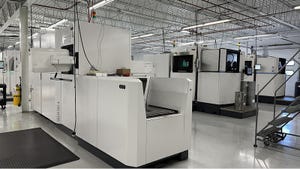June 21, 2010

In mechatronic system design, we integrate. From the verystart of the design process, we combine the physical system with sensors,actuators, computer control and human interfaces to give it some intelligenceand decision-making capability.
At its very heart, system complexity is synonymous withpower. However, this power can be good or bad. If the complexity in any systemis not tamed, the consequences can be devastating. We have witnessed some ofthe consequences of untamed complexity in the Chernobyl nuclear plant accidentin 1986, the recent world financial meltdown, and now the Gulf of Mexico oilspill. All are examples of systems of unimaginable complexity - intended or not- that were left unmanaged without common-sense, human-centered checks and balances,which resulted in catastrophes of immense scope.
In a complex system,learning how all the pieces - constant and variable - interact gives a depth ofunderstanding that averts catastrophe. That is what we mean by human-centereddesign - understanding the interfaces among technology, people, communities,governments and nature. This is what makes complexity manageable.
All complex systems have, as a foundation, fundamentalprinciples or core knowledge that cannot be ignored. However, there must also bea flexibility from the engineering perspective to respond to problems whichinevitably arise. Clearly, the typical discipline-specific engineer is notwell-equipped to manage such complexity; not even an engineer withmultidisciplinary engineering breadth can do an effective job.
Complexity demands an engineering skill set with technologydepth and also non-technical breadth - specifically, human-centered designexpertise capable of managing complexity. This concept received wide acceptanceat the IBM/IEEE Conference on Transforming Engineering Education, held April6-9 in Dublin. Jim Spohrer, director of IBM University Programs, saw it asessential to IBM's focus on service activities worldwide because every producthas a service associated with it. The questions that arose at this conferencewere: "Why are these engineers not being created?" and "How do we ensure thatthey will be?"
The urgent problems society faces are multidisciplinary innature, complex, and ever-changing. Engineering graduates need to be able toadapt and apply technology that is human-centered, desirable, feasible, viable,sustainable, usable and manageable. Incoming students need to experience aculture change. They need to transform from the world of memorizing,test-taking and focusing on grades, to the world of critical-thinking problemsolving, turning easily accessible information into insight and understanding,and taking responsibility to become an engineer.
So if we all know what should happen in engineeringeducation, why is it not happening?
As I see it, there are two main impediments to engineeringeducation reform. First, the silo structure in a typical engineering collegedoes not foster reform. Engineering departments typically don't collaborate orinteract in a multidisciplinary way and fail to realize that doing so wouldenhance, not diminish, what they do. Second, there is a failure of faculty toget out of their comfort zone, become involved in real-world problem solving,and respond to the challenges of teaching multidisciplinary engineering problemsolving in a discovery learning mode, as opposed to a lecture mode.
Knowledge needs to be unbundled and rebundled in engineeringeducation to give it balance between theory and practice and relevance to thesolution of the multidisciplinary problems society faces. Engineering educationdone in this manner can mitigate catastrophe!
Visit the MechatronicsZone for the latest mechatronics news, trends, technologies andapplications.
About the Author(s)
You May Also Like





